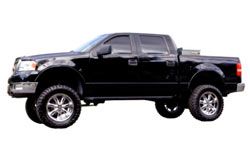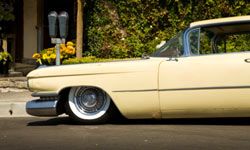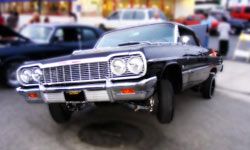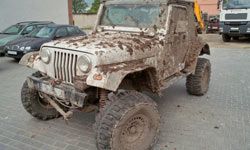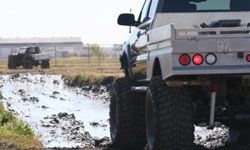As with the hydraulics of lowering, fixed hydraulic systems work well for lifting vehicles, also. Raising a car or truck even an inch will make it behave differently, and hydraulics -- whether air or liquid -- compensate for the changing needs of the frame and the strength needed to withstand the altered up and down forces. Lifting a truck for off road use, or raising a car to make room for larger tires, create the same consideration: engineering the change for safe and smooth handling without adding too much stress on the vehicle structure.
Suspension lifts work as front only, rear only, whole body and one wheel well at a time, as well as in combination rises. And if overall improved performance is the main goal of lifting a car or truck, suspension lifts top that list, too. Where a body lift will take a vehicle up without raising the frame, a suspension upgrade lifts the frame itself farther from the ground. Lift kits are typically suspension lift kits, and are "aftermarket" because they change the suspension of the car as it was originally manufactured, or marketed. In a lift system, a vehicle's frame is in a sense "suspended" in order to minimize contact with the road. Suspension overhauls allow for better fine-tuning of all of the handling components, as well as increased customizing possibilities, and they often have a price tag to match, costing anywhere between $2,000 and $5,000.
